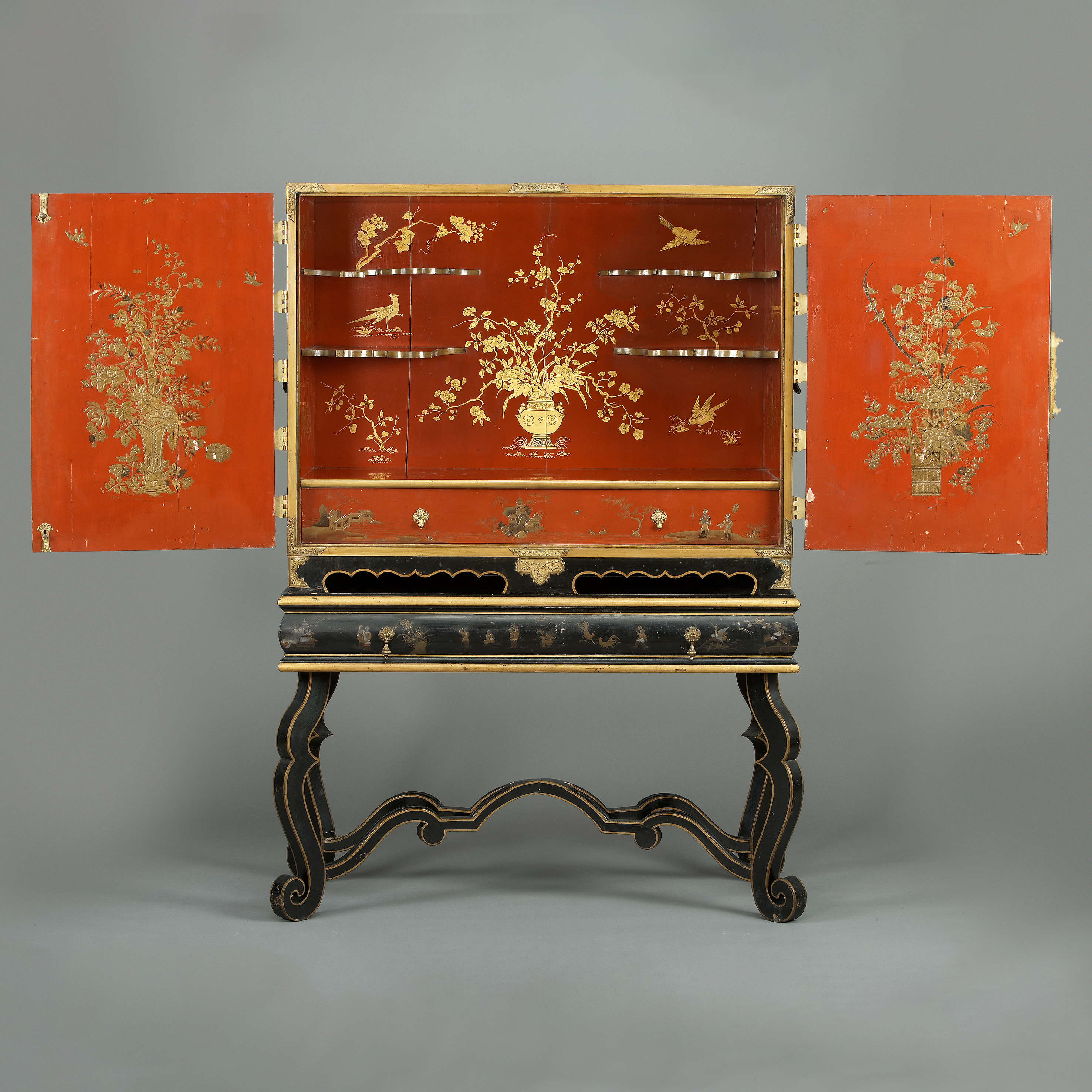Lacquered cabinet
Martin Schnell (1675-1740)
Dresden, c. 1715
Construction: oak and soft wood, partially veneered. The japanned lacquer decoration is partially in relief, original lock and forged key. The fittings are bronze, cast, chased, punched and engraved with leaf and fire gilding and enamel decoration.
Height: 175.5 cm | Width: 122.5 cm | Depth: 49.5 cm
Provenance: Inventory Château De Sury-Le-Comtal, Loire, Frankreich
Ref No: 1673
The cabinet stands on a typical Saxon curved, profiled base with bulging frames and a recessed drawer with gilded, teardrop-shaped drop handles. Three-sided curved frames form the independently designed base of the two-door, box-shaped top section. The front sides of the doors feature an asymmetrical arrangement of rock formations, pavilion architecture, and figurative chinoiserie. The lacquer painting is very similar to that on the lacquer cabinet from the Chinese Salon, which was in Dresden Castle until 1945. The sides are adorned with expansive, sculptural floral tendrils in a reddish-brown hue, accompanied by additional chinoiserie figures on the right-hand side. Behind the double doors is a base drawer with teardrop-shaped, gilded handles, as well as two symmetrically arranged corner shelves with curved fronts.
The cabinet’s interior is entirely finished in bright red lacquer with elaborate gold paintings, and the insides of the doors are decorated with reliefs depicting lavish bouquets of flowers in vases, flowering branches, and bamboo. The left door leaf features recessed, gilded and lacquered sliding bolts at the top and bottom that mirror the design of the lock and hinge fittings from the Schnell workshop. These fittings are closely related in style and technique to confirmed works from the Schnell workshop. It has only recently become possible to prove that Martin Schnell did not entrust the design of his fittings, with their delicate coloured enamel decorations, to any other workshop.
The significant similarities with authenticated lacquered furniture, in terms of the shape of the curved, profiled base; the characteristic decorative motifs; the chalk base coloured bright blue with smalt as a base for the relief decorations; and the delicate, coloured enamel fittings with chinoiserie motifs, all point to Martin Schnell as the creator of the recently discovered Saxon lacquer cabinet presented here.
Literature:
- Exhibition catalogue, Sächßisch Lacquirte Sachen, Lackkunst in Dresden unter August dem Starken; Monika Kopplin and Gisela Haase, Museum für Lackkunst, 1998.
- Kopplin, Monika, chinois, Dresdener Lackkunst in Schloß Wilanow, Münster, 2005
- Lessmann, Johanna, Zeugnis der Chinamode, Ein Dresdner Lackkabinett für Hamburg, Kunst & Antiquitäten, 4-1990, page 53-55.
- Baarsen, Reinier, German Furniture, Rijksmuseum, Amsterdam, 1998, page 44-47.

